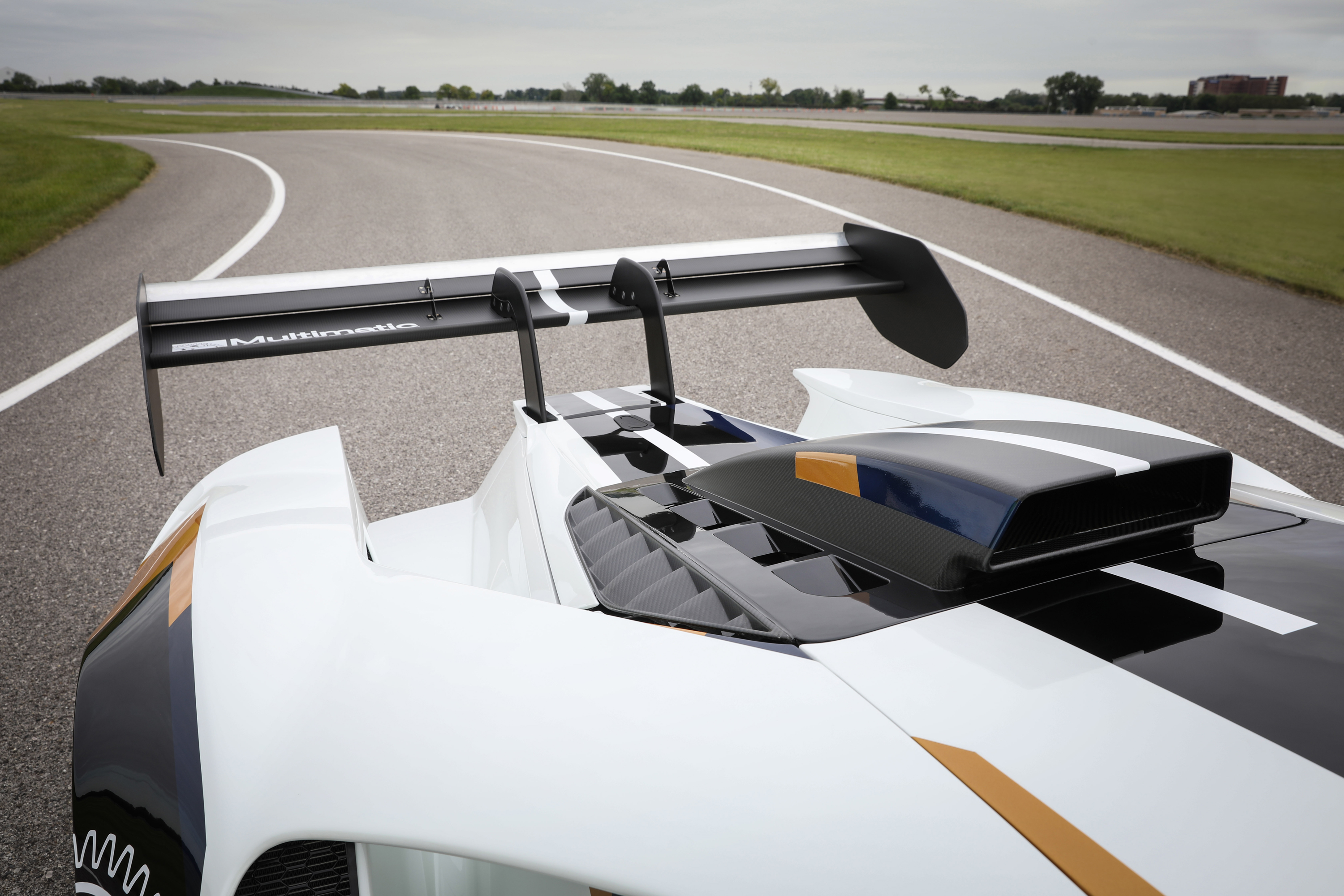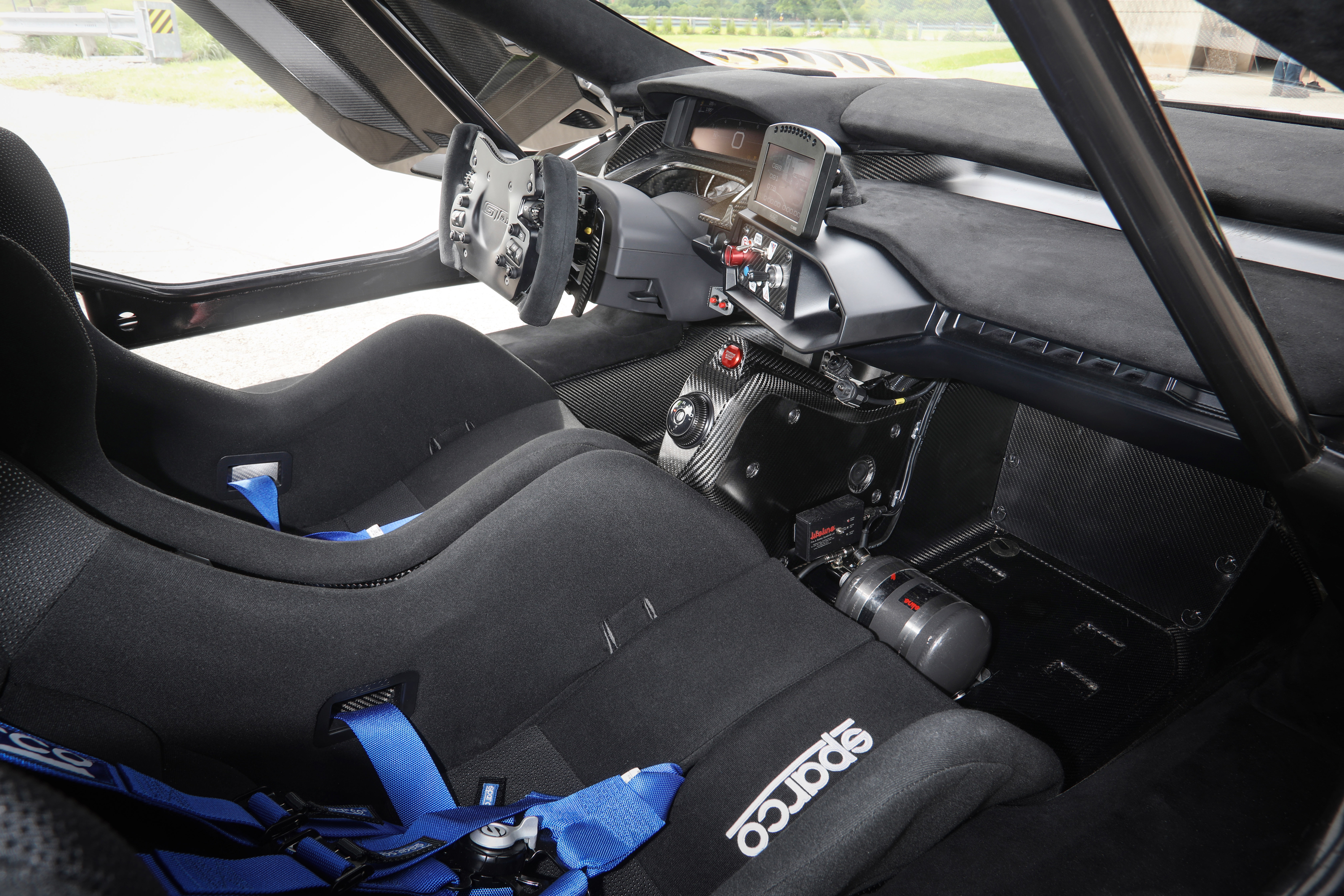Ford Motor Company has made a lot of noise with the street and race versions of the modern Ford GT. In race form, the GT has racked up an impressive list of wins at tracks like Le Mans, Daytona, Laguna Seca, Silverstone, Fuji, Shanghai, etc. Over that same 2-year period the street version of the Ford GT has remained a hot commodity in the exotic sports car world.
However, whether in street or organized race trim, the new Ford GT has been configured under a litany of regulations. The street version has to abide by emissions, safety and sound regulations, all of which add weight while restricting power. Even more frustrating, the Ford GTs racing in the World Endurance Championship and IMSA series also face horsepower restrictions and weight penalties, all in an effort to “balance” the GT’s performance against lesser…uh…I mean other…competitors.
This begs the question: What if Ford built a version of the new Ford GT without any street or organized racing restrictions? What if the company simply took the GT’s basic platform and drivetrain and configured it in a way to maximize performance?
That’s exactly what the new Ford GT Mark II represents – a Ford GT engineered to take full advantage of the GT’s inherent performance-oriented design. Hau Thai-Tang, Ford’s Chief Product Development & Purchasing Officer, described the Ford GT Mark II as “the ultimate expression of performance for the Ford GT. It combines all of the learnings we’ve had from our motorsports program, with Larry [Holt] and the Multimatic Team, without any of the restrictions of balance of performance. It really allows us to optimize every element of the vehicle.”
Multimatic’s Chief Technical Office, Larry Holt, was quick to note that while the street version of the Ford GT makes approximately 650 horsepower the race version, after balance of power restrictions, is limited to around 495 horsepower. Holt also noted the limitations on aerodynamics and downforce for the current race versions of the Ford GT, as well as the requirement to use steel, versus carbon ceramic, brakes. Everything from the size of the rear wing to the use of louvered front fenders (which reduces wheelhouse pressure and around 90 pounds of lift) is restricted in the current race versions of the Ford GT.
By contrast, the Ford GT Mark II holds nothing back. Starting with a body that screams “Race Track!” the Ford GT Mark II adds a duel-element fixed rear wing, louvered front fenders, a more aggressive “Evo” front splitter and larger “flicks” (dive planes) on the front corners. The car’s underbody panels are slightly (about .2 inches) higher than the GTLM car’s to reduce potential damage during the occasional “off” a Mark II customer might experience while exercising this Ford GT at a race track. All of these changes improve the Mark II’s downforce compared to the street or racing GT, giving it approximately 1,900 pounds of downforce at 150 mph.
Another distinctive Mark II body element is the large scoop mounted at the rear of the roof. On GTLM race versions of the Ford GT this scoop helps cool the engine, but on the Ford GT Mark II this scoop feeds a transmission and oil cooler mounted where the road car’s (tiny) trunk is located. Additional cooling power comes from the Ford GT’s distinctive side (outboard) air coolers, which on the Mark II are even larger than the street or homologated race cars. These larger coolers also include an automatic water spray feature when engine temperatures hit a predetermined level, ensuring engine power remains consistent even under extreme use.
Speaking of power, underneath its more aggressive bodywork the Mark II features a revised drivetrain, with a 700-horsepower 3.5-liter EcoBoost V6. The twin-turbo V6 sends those 700 horses through a recalibrated Getrag dual-clutch transmission with a performance tune for quicker shifts.
Rolling on 19-inch wheels with Michelin racing slicks, the Ford GT Mark II re-acquires the road cars carbon ceramic brake package and adds a recalibrated ABS program to take full advantage of the Mark II’s increased stopping power. Stronger brake mounting points and revised suspension tuning completes the Mark II’s engineering upgrades. According to Larry Holt, at 3064 pounds the Ford GT Mark II‘s performance will be on par with a GT3 racecar.
Inside the Ford GT Mark II’s cabin you’ll find the same gauge cluster seen in the road car, though it’s supplemented with a MoTeC data logging system to precisely monitor the car’s track performance. The cabin also features two custom Sparco racing seats, allowing a passenger to experience the Mark II’s capabilities. Potential passengers take note — the Ford GT Mark II is capable of up to 2Gs lateral force.
As a hand built, non-street-legal track weapon, Ford will only produce 45 Ford GT Mark IIs. These will be included in the car’s total 1,350-unit production run. Deliveries will begin in August of 2019 and continue through the car’s remaining production run, which ends in 2022. The Mark II’s starting price is $1.2 million. Options include integrated air jacks to quickly and easily lift the car, plus just about any paint scheme or racing livery a buyer can imagine.
Additional options are possible. As Larry Holt said, “At this level, when a guy wants to buy a car like this, and he asks for something…if he wants to do a carbon cupholder I guess we’ll do a carbon cupholder.”














Ron
I’m going to have to be happy with my Carbon Series to stay happily married!